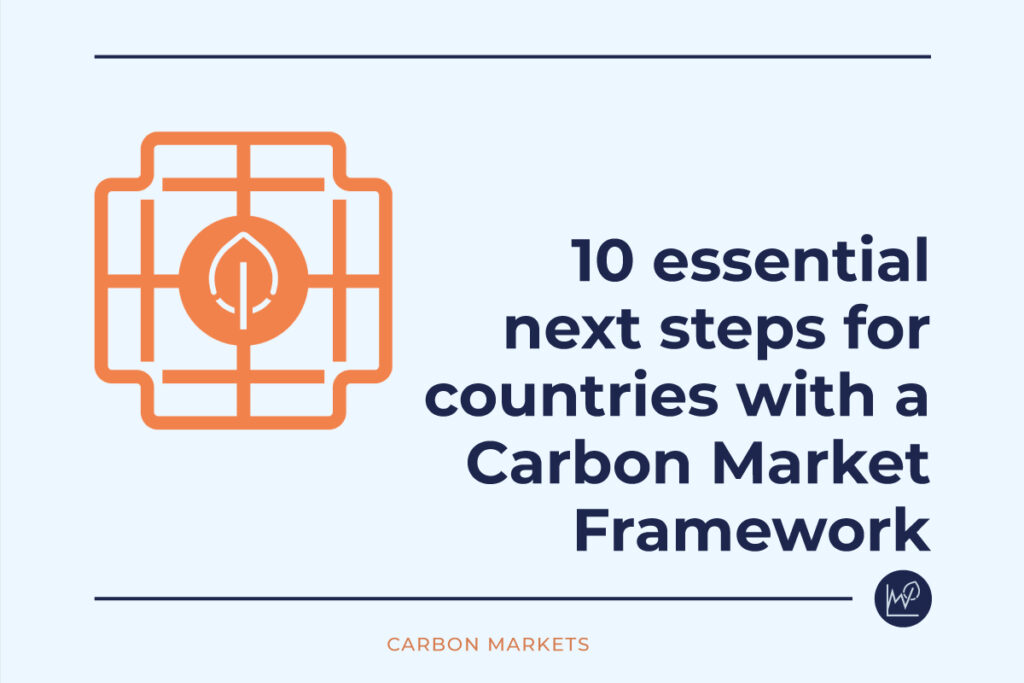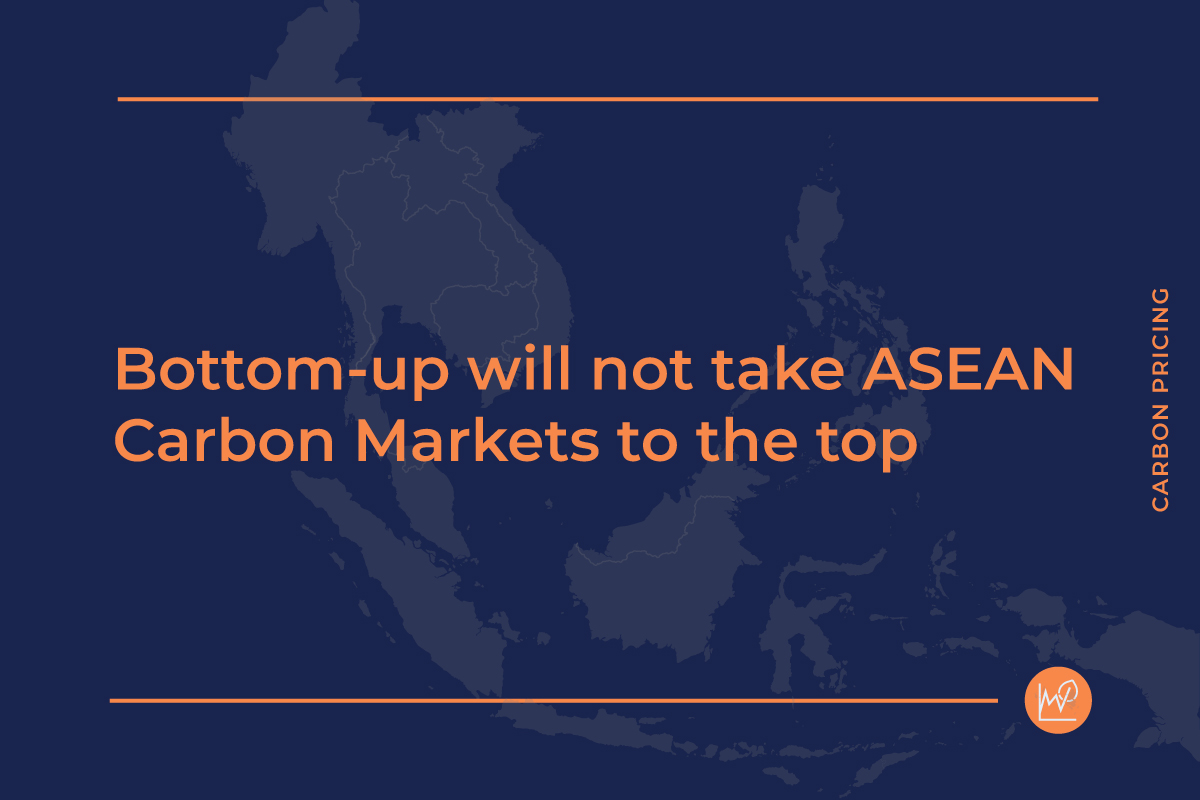Listen to article
In our recent Insight’s article, we shared 10 lessons learned from our experience supporting countries in designing national carbon market frameworks. Many countries have indeed moved forward with the design and implementation of national regulatory and operational frameworks to participate in carbon markets under Article 6 of the Paris Agreement and the so-called Voluntary Carbon Market (VCM). However, creating this foundational framework is just the first step. For countries equipped with the infrastructure and policies to engage in international carbon markets, the next challenge lies in refining, expanding, and maximizing the benefits of these frameworks. This article outlines 10 essential steps host countries can take to further enhance their participation in carbon markets and unlock the full potential of Article 6 mechanisms.
1. Manage ongoing requests
Countries with an established carbon market framework need to begin addressing requests that emerge from various actors. For example, countries that allow VCM projects to request ITMO authorization (which imply corresponding adjustments) will likely begin receiving these types of applications to start with. In fact several countries already have.
What to do next?
- Develop clear guidelines for requesting authorization of ITMOs (corresponding adjustments) from VCM projects.
- Establish a transparent process for handling and approving such requests.
- Review and assess registered projects to ensure their eligibility for ITMO authorization (corresponding adjustments) based on national and international requirements.
2. Build a Pipeline of Projects
What to do next?
- Launch a national call for proposals to identify high-potential projects that align with the national carbon market framework.
- Develop transparent criteria for project selection that balance carbon market participation and broader sustainable development goals.
3. Engage Bilateral and Multilateral Partners
What to do next?
- Explore bilateral partnerships with countries that can support project financing, transfer technologies, and technical expertise under Article 6.
- Establish memorandums of understanding (MoUs) to formalize partnerships and define roles, responsibilities, and shared goals.
- An alternative to bilateral cooperation is to leverage partnerships with multilateral organizations for additional project funding such as GGGI’s forthcoming Carbon Transaction Platform.
4. Strengthen institutional capacity
What to do next?
- Expand capacity building programs to line ministries, private sectors, and civil society to promote cross-sectoral engagement in carbon markets.
- Partner with international organizations to exchange knowledge and stay updated on the latest developments in the carbon market.
5. Consider a long-term view on Article 6 participation and align with Sustainable Development Goals (SDGs)
Many countries are early movers in developing Article 6 frameworks. Initially, the focus is on ensuring participation without jeopardizing NDC compliance, establishing low-risk, eligible activities, and building strong Article 6 institutions. However, there is limited guidance from Article 6 on structuring activities that are sustainable beyond the NDC crediting period. Taking a long-term perspective is crucial for ensuring ongoing emission reductions and aligning carbon market participation with broader goals.
Moreover, while the initial focus of Article 6 frameworks is typically on achieving NDCs, there is significant opportunity to align carbon market participation with broader sustainable development goals. By prioritizing projects that not only reduce emissions but also provide socio-economic benefits, countries can leverage carbon finance to achieve their SDG targets.
What to do next?
- Incorporate long-term planning into Article 6 participation strategies, including considerations for activities that extend beyond NDC periods.
- Ensure alignment between carbon market activities and Sustainable Development Goals (SDGs) to maximize socio-economic benefits (see more details below).
- Conduct a qualitative screening of sectors and activities where Article 6 participation can contribute to both NDC and SDG goals.
- Create criteria toolkits for project selection to ensure long-term climate sustainability and SDG financing.
6. Develop more elaborated activity selection criteria
What to do next?
- Expand upon existing positive lists by developing a more detailed set of selection criteria that includes long-term sustainability, technology transfer and novel practices, and sectoral transformation potential.
- Regularly review and adjust the criteria to align with new climate targets and market developments.
7. Avoid pitfalls: Avoid overselling and double counting and ensure additionality
A common risk for early movers in carbon markets is overselling ITMOs, which can undermine their ability to meet their own NDC targets. Countries need to be strategic about the volume of ITMOs they trade, ensuring they retain sufficient mitigation outcomes to meet national targets. Moreover, ensuring the additionality of projects — that is, proving they wouldn’t occur without carbon finance and is not part of the NDC implementation baseline projects — is essential to maintaining the integrity of carbon credits.
In addition to this, for those countries that have already set up a framework, ensuring transparency and accountability through a robust ITMO tracking and reporting system is critical. Systems should be developed or enhanced to ensure accurate reporting of mitigation outcomes. This includes tracking Internationally Transferred Mitigation Outcomes (ITMOs) to avoid double counting, applying the corresponding adjustments and ensuring compliance with the Paris Agreement’s Enhanced Transparency Framework (ETF).
What to do next?
- Select conservative methodologies to ensure that traded mitigation outcomes are real, measurable, and contribute genuinely to emission reductions.
- Strengthen national databases for mitigation activities and be transparent about the ITMO authorization process and the authorizations granted.
- Develop clear protocols for corresponding adjustments to avoid double counting and maintain the environmental integrity of ITMOs.
8. Engage the private sector and civil society
What to do next?
- Foster public-private partnerships to catalyze investment in mitigation projects.
- Engage local communities, ensuring that these initiatives bring tangible benefits beyond carbon reduction, such as job creation and infrastructure development.
9. Consider international financing trends for each of the identified sectors
What to do next?
- Conduct an analysis of international financing trends for key sectors involved in Article 6 projects and the VCM.
- Align project development strategies with global market trends to ensure sustained financing and competitiveness in international carbon markets.
10. Report, review and adjust
What to do next?
- Conduct periodic reviews of Article 6 frameworks and project performance.
- Adjust national frameworks and criteria based on new climate commitments, technology advancements, and international market trends.
Conclusions
Establishing an Article 6 framework is a significant milestone, but it is only the first step toward fully participating in international carbon markets. Countries must then focus on long-term planning, institutional capacity-building, SDG alignment, private sector engagement, and staying aware of international financing trends. By continuously refining and expanding their frameworks, they can unlock the full potential of Article 6 mechanisms, ensuring not only NDC compliance but also sustainable development and socio-economic benefits for their populations. As the landscape of international carbon markets continues to evolve, host countries should remain agile, regularly reviewing and adjusting their strategies to maximize the opportunities that carbon markets offer for a low-carbon, sustainable future.
What to do next?
If you would like assistance on how and when to take these next steps, don’t hesitate to contact Neyen. We’ll be happy to begin a conversation on the most appropriate pathway for your country.




